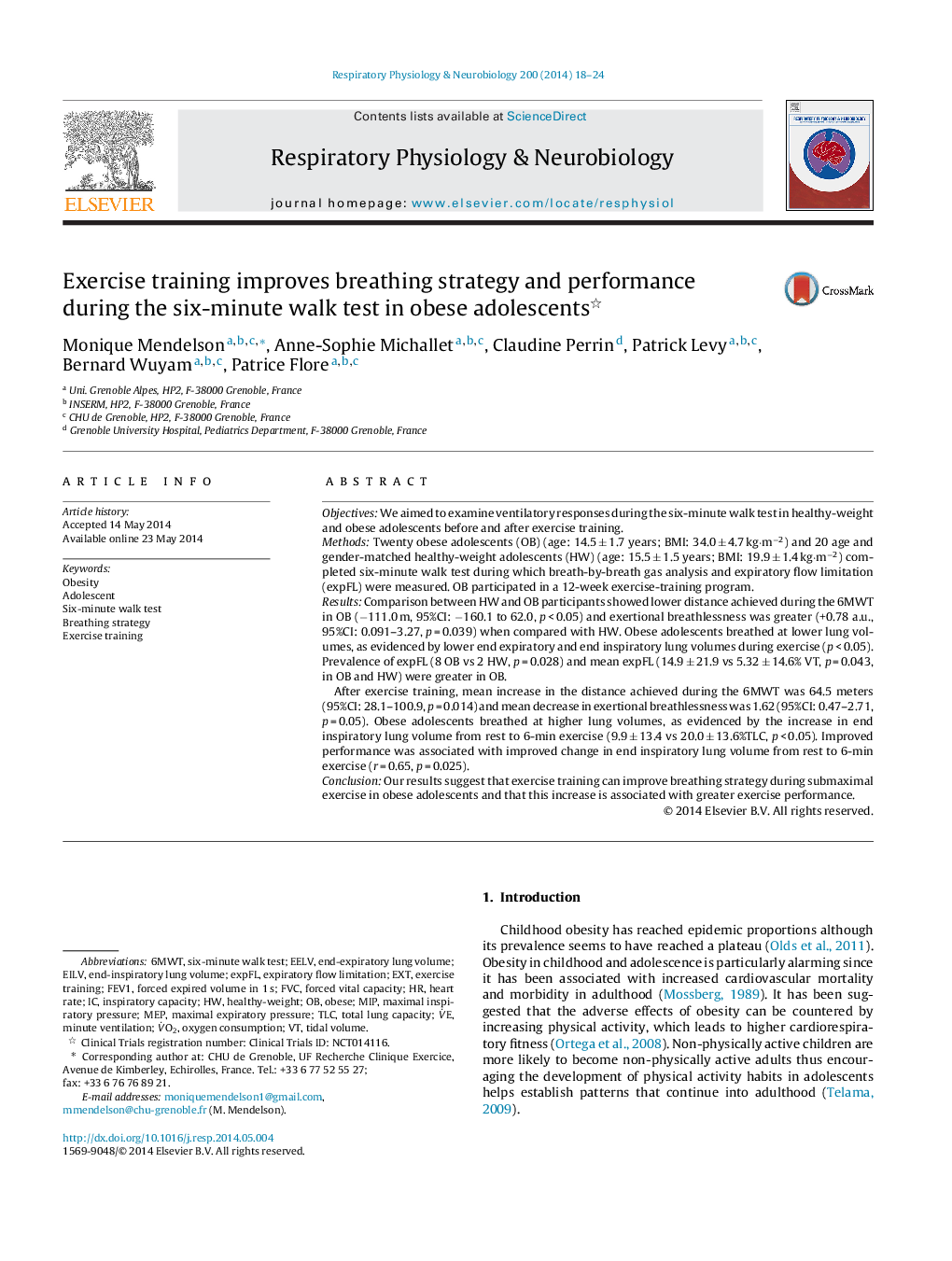| Article ID | Journal | Published Year | Pages | File Type |
|---|---|---|---|---|
| 2846992 | Respiratory Physiology & Neurobiology | 2014 | 7 Pages |
•·Obese and normal-weight adolescents were evaluated during a six-min walk test.•·The obese group breathed at lower lung volumes and had expiratory flow limitation.•·After exercise training, exertional breathlessness was decreased.•·Obese adolescents also improved their breathing strategy and performance.•·Improved performance was associated with breathing at higher lung volumes.
ObjectivesWe aimed to examine ventilatory responses during the six-minute walk test in healthy-weight and obese adolescents before and after exercise training.MethodsTwenty obese adolescents (OB) (age: 14.5 ± 1.7 years; BMI: 34.0 ± 4.7 kg·m−2) and 20 age and gender-matched healthy-weight adolescents (HW) (age: 15.5 ± 1.5 years; BMI: 19.9 ± 1.4 kg·m−2) completed six-minute walk test during which breath-by-breath gas analysis and expiratory flow limitation (expFL) were measured. OB participated in a 12-week exercise-training program.ResultsComparison between HW and OB participants showed lower distance achieved during the 6MWT in OB (−111.0 m, 95%CI: −160.1 to 62.0, p < 0.05) and exertional breathlessness was greater (+0.78 a.u., 95%CI: 0.091–3.27, p = 0.039) when compared with HW. Obese adolescents breathed at lower lung volumes, as evidenced by lower end expiratory and end inspiratory lung volumes during exercise (p < 0.05). Prevalence of expFL (8 OB vs 2 HW, p = 0.028) and mean expFL (14.9 ± 21.9 vs 5.32 ± 14.6% VT, p = 0.043, in OB and HW) were greater in OB.After exercise training, mean increase in the distance achieved during the 6MWT was 64.5 meters (95%CI: 28.1–100.9, p = 0.014) and mean decrease in exertional breathlessness was 1.62 (95%CI: 0.47–2.71, p = 0.05). Obese adolescents breathed at higher lung volumes, as evidenced by the increase in end inspiratory lung volume from rest to 6-min exercise (9.9 ± 13.4 vs 20.0 ± 13.6%TLC, p < 0.05). Improved performance was associated with improved change in end inspiratory lung volume from rest to 6-min exercise (r = 0.65, p = 0.025).ConclusionOur results suggest that exercise training can improve breathing strategy during submaximal exercise in obese adolescents and that this increase is associated with greater exercise performance.
